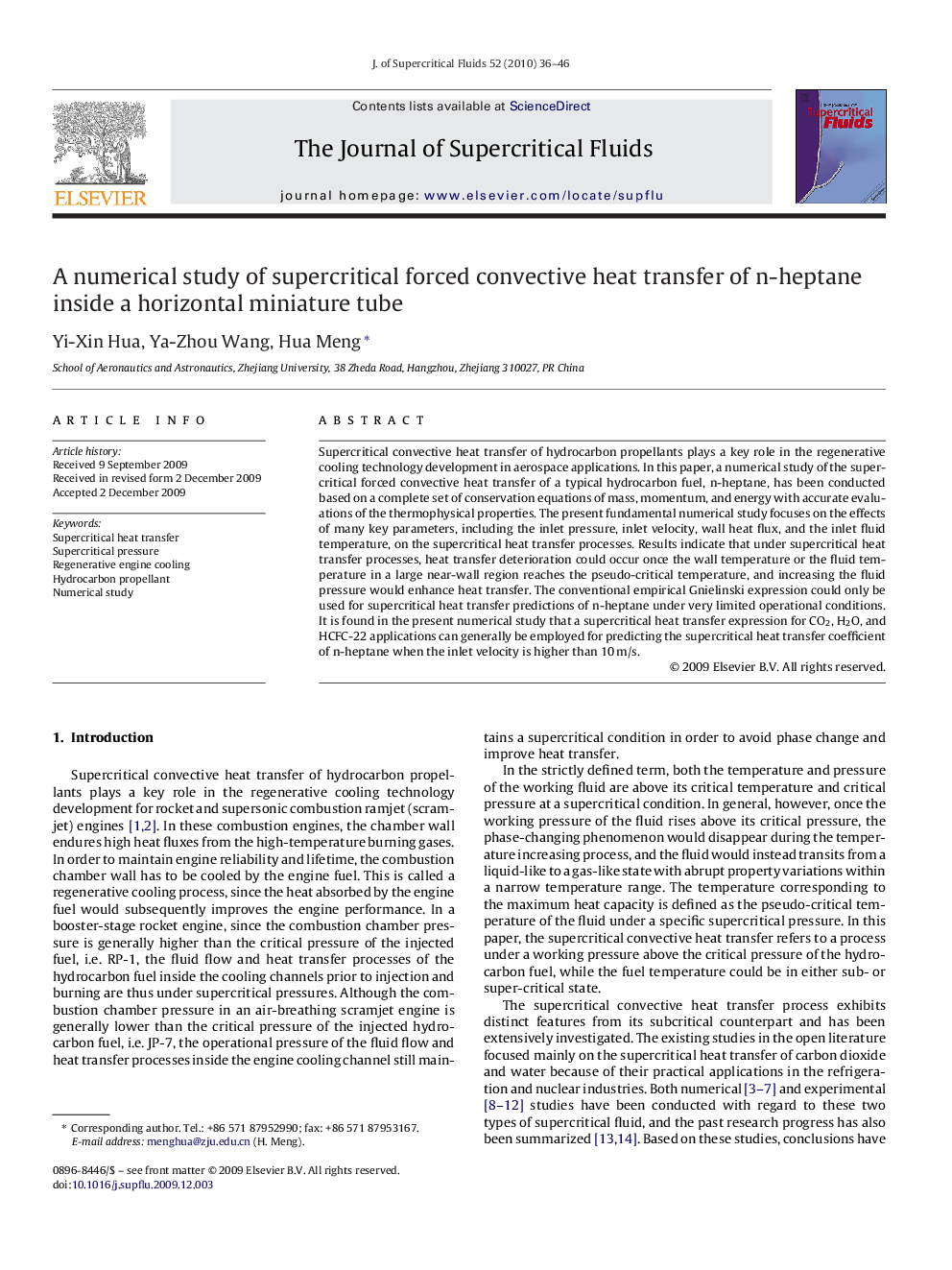| کد مقاله | کد نشریه | سال انتشار | مقاله انگلیسی | نسخه تمام متن |
|---|---|---|---|---|
| 231498 | 1427437 | 2010 | 11 صفحه PDF | دانلود رایگان |

Supercritical convective heat transfer of hydrocarbon propellants plays a key role in the regenerative cooling technology development in aerospace applications. In this paper, a numerical study of the supercritical forced convective heat transfer of a typical hydrocarbon fuel, n-heptane, has been conducted based on a complete set of conservation equations of mass, momentum, and energy with accurate evaluations of the thermophysical properties. The present fundamental numerical study focuses on the effects of many key parameters, including the inlet pressure, inlet velocity, wall heat flux, and the inlet fluid temperature, on the supercritical heat transfer processes. Results indicate that under supercritical heat transfer processes, heat transfer deterioration could occur once the wall temperature or the fluid temperature in a large near-wall region reaches the pseudo-critical temperature, and increasing the fluid pressure would enhance heat transfer. The conventional empirical Gnielinski expression could only be used for supercritical heat transfer predictions of n-heptane under very limited operational conditions. It is found in the present numerical study that a supercritical heat transfer expression for CO2, H2O, and HCFC-22 applications can generally be employed for predicting the supercritical heat transfer coefficient of n-heptane when the inlet velocity is higher than 10 m/s.
Figure optionsDownload as PowerPoint slide
Journal: The Journal of Supercritical Fluids - Volume 52, Issue 1, February 2010, Pages 36–46